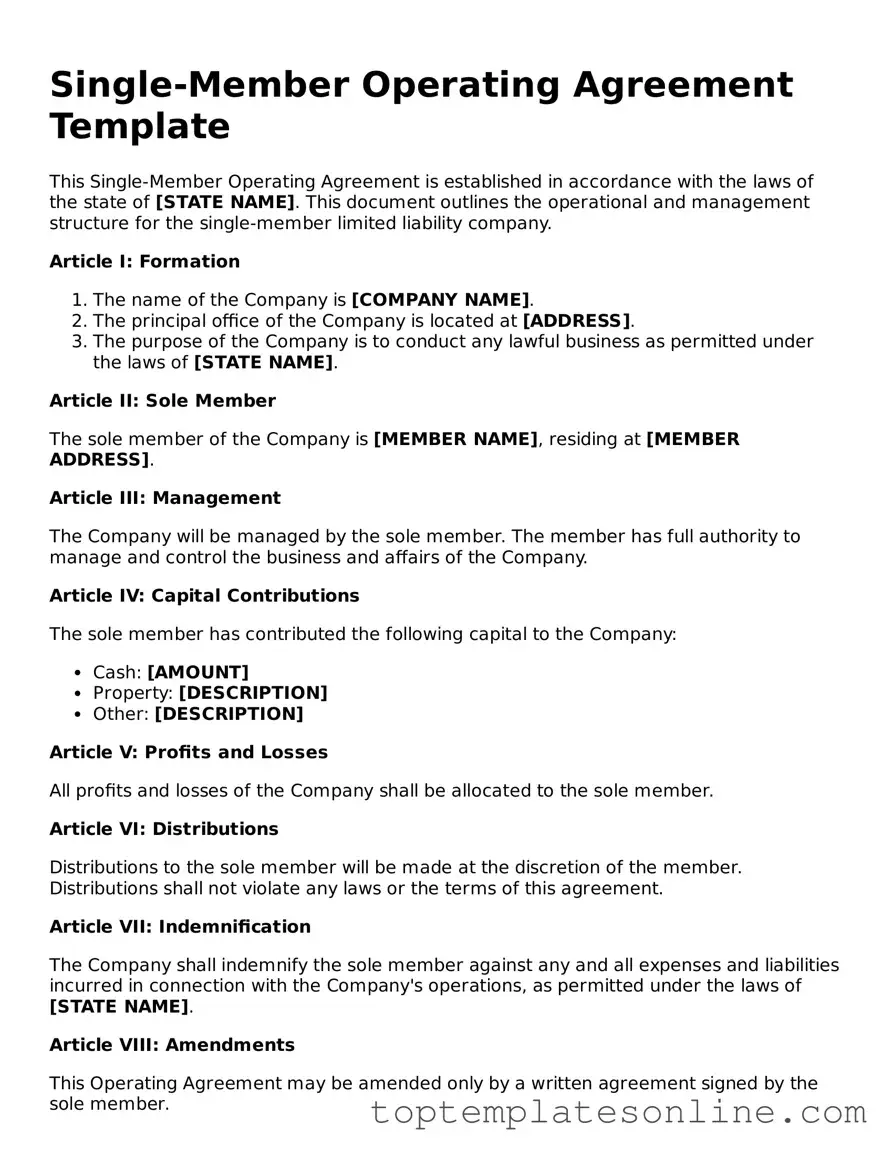Attorney-Approved Single-Member Operating Agreement Form
The Single-Member Operating Agreement is a legal document that outlines the management structure and operational guidelines for a limited liability company (LLC) with a single owner. This agreement serves to clarify the owner's rights and responsibilities while providing a framework for the company's operations. It is essential for establishing the LLC as a separate legal entity and protecting the owner's personal assets.
Customize Single-Member Operating Agreement Here
